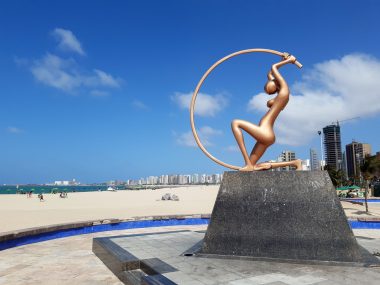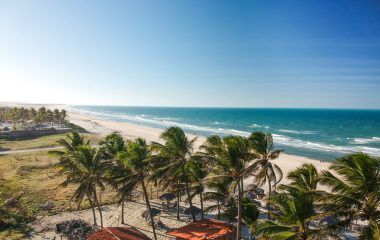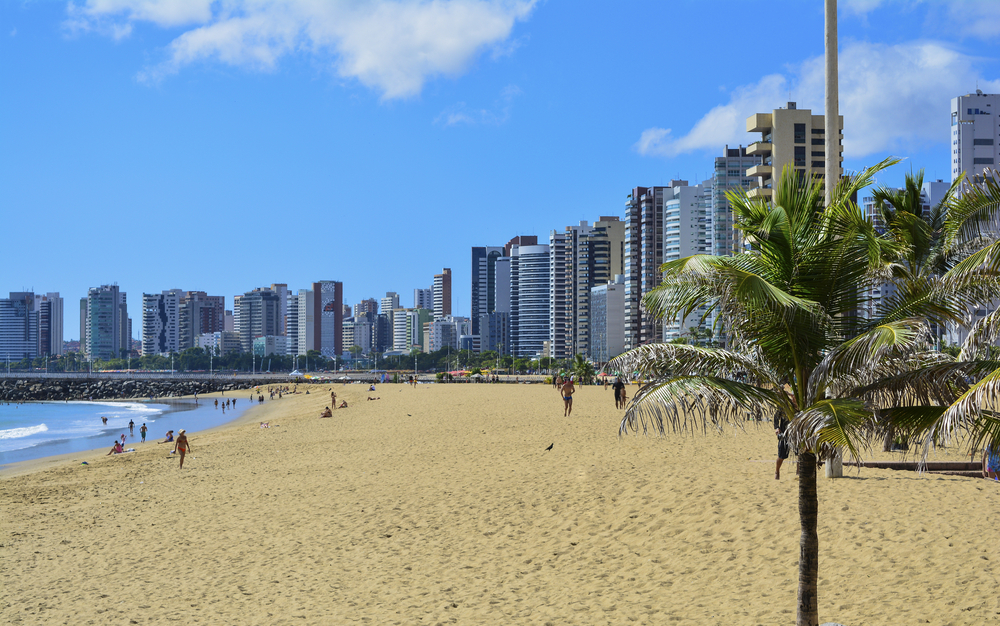Anyone in Fortaleza, in the once wild north of Brazil, who hopes that the sun will set in the sea there, is mistaken. The sun tends to hide behind the horizon inland, peeking through the striking twin towers of the Catedral Metropolitana de Fortaleza. But the evening atmosphere by the ocean is still recommended to anyone who has brought a sense of romantic moments with them on their trip to this large South American country. Fortaleza is steeped in history and blessed with a backdrop of concrete towers that would be a credit to any metropolis.
The Tapuias Indians and Cannibalism
Until the tenth century AD, this region of Brazil was inhabited by the Indian tribe of the Tapuias . They were said to have a penchant for cannibalism, and it is said that one day they moved to nearby Amazonia when the Spanish navigators Vicente Yanez Pinzon and Diego de Lepe anchored their ships on the coast of today’s Fortaleza before the Portuguese. The actual settlement of this area was demonstrably carried out by the Dutch, who were about to conquer the mighty Fort Sao Sebastiao. What remains from those medieval times are the ruins of the Fort de Nossa Senhora da Assuncao, which can also be found today in travel guides as the “Assumption of the Virgin Mary”. This complex was the nucleus of today’s Fortaleza.
“The Mother of the Brazilian People”

The fishing boats at Praia Mucuripe
One of the most popular places on Praia de Iracema was used as a boat landing stage in earlier times. The “Ponte dos Ingleses”, the “Bridge of the English”, is the point where you can often observe a dolphin off the coast in the evening hours. This is the best side of the city of Fortaleza, as this is where the wealthy people of the city of 2.7 million people live. When the sun has set, the district comes alive with its numerous bars and clubs. At Praia Mucuripe, visitors immediately notice the traditional wooden fishing boats. It is always a spectacle for the locals and for the tourists when the traditional jangadas push their way onto the beach with their fresh catch of lobsters and seafood of all kinds.
Information center in an old prison

The culinary diversity of the city
As a starting point for a visit to the city center of Fortaleza, you should choose the western end of Rua Dragao de Mar. The square is not to be missed, because it is a constant meeting place for street musicians, and from the bars ingratiating samba and reggae sounds penetrate the sidewalks. The huge Mercado Central is also lively with its many hundreds of stalls. Among other things, the fresh cashew nuts, which come from the cajú trees in the area and are an export hit, are in demand there. The city’s restaurants have an excellent reputation and feature the full spectrum of seafood on their menus. The capital of the state of Ceará also surprises with its culinary versatility.
Fortaleza – The sea warms up to 28 degrees
Fortaleza, the city of millions near the equator, enjoys a tropical climate. The temperatures are often around thirty degrees in the shade and offer ideal conditions for untroubled bathing pleasure. The rainy season lasts from January to June and gives the area heavy but usually short thundershowers. Especially in the afternoon, the sky opens its floodgates. Hardly any rain is to be expected between the months of July and December. The water of the sea then approaches the temperatures of the bathtub at home with up to 28 degrees. Then eight to nine hours of sunshine a day are the rule. Fortaleza is easily accessible via Pinto Martins Airport. Excursions in the surrounding area are also recommended. For example, to Cumbuco, the declared paradise of kitesurfers, or to the picturesque town of Jericocoara.


